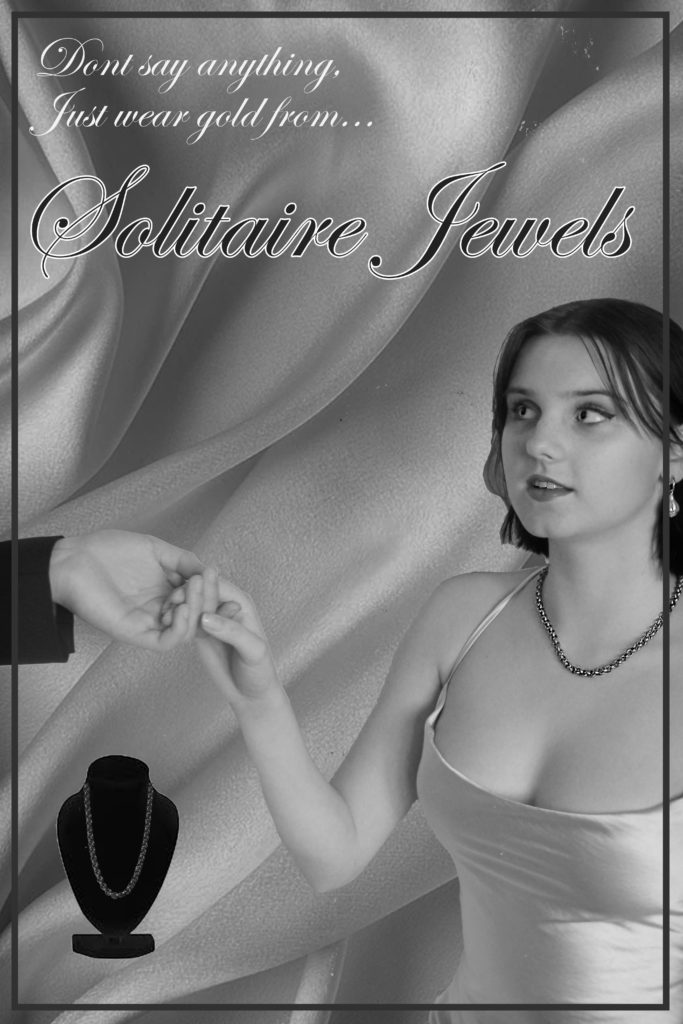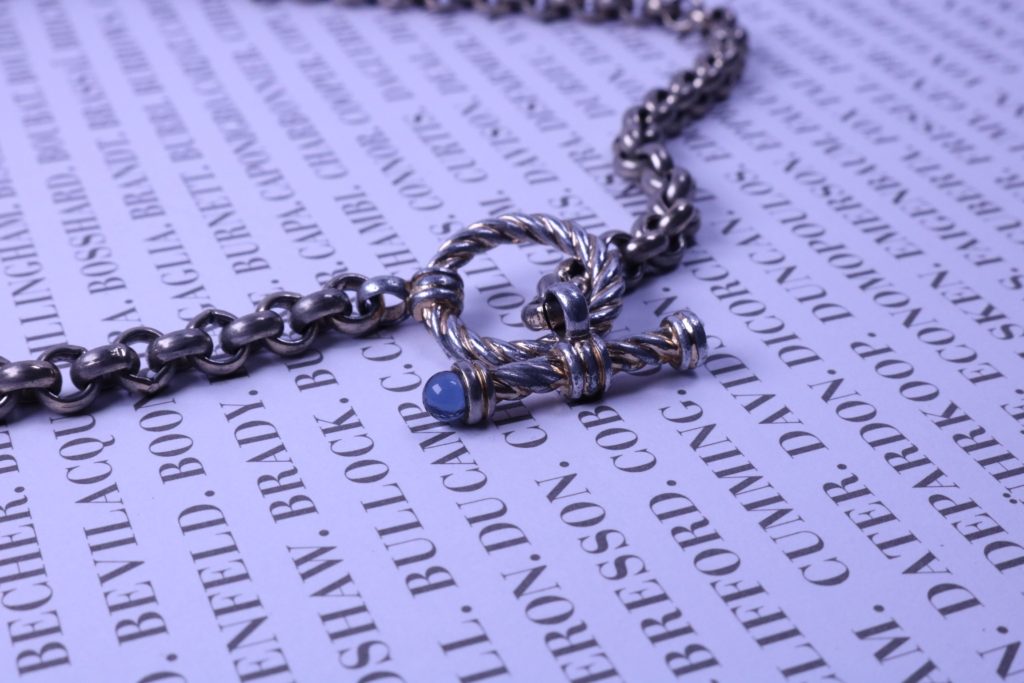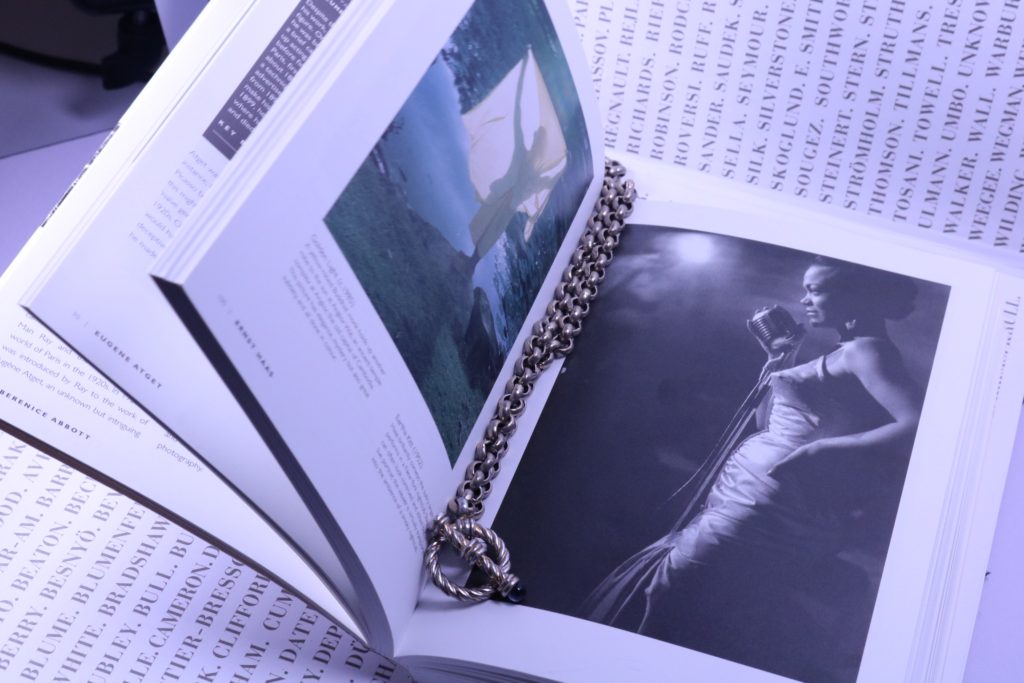Bombshell (2019, Dir. Jay Roach) is a story based upon the accounts of the women at Fox News who set out to expose CEO Roger Ailes for sexual harassment.
All posts by Ruby Scott
Filters
Judith Butler describes gender as “an identity instituted through a stylized repetition of acts”. In other words, it is something learnt through repeated performance.
How useful is this idea in understanding how gender is represented in both the Score and Maybelline advertising campaigns?
In this essay I will be constructing an argument based on the principles of Judith Butler’s theory of gender performativity, which will evaluate the foundations of gender and identity and how they are represented throughout media. To do this I will analyse the gender representations in a print advert for Score, from the 1960s, and a video advert for Maybelline, made in 2017.
Judith Butler, in 1988, theorises that ‘rituals and performative actions constantly reinforce our identities’ which implies that it is your behaviour that fabricate your gender and identity, most significantly your repeated behaviour. In saying that, she highlights that no one is just born with an identity but as people grow up and as people are exposed to new knowledge and experiences and hardships; that is when one’s identity is formed. This approach is extremely subjective as just because a certain practice may be typically performed by a girl, such as painting your nails, does not mean that it cannot be performed by a male or any other gender. Therefore, because we the ones that control our performative actions, we have the ability to control and re-shape our identities, linking to David Gauntlett’s theory of fluid identity, which tells us that in reality gender is a social construction and is completely subjective. She states the issues with maintaining an identity which ‘falls outside of heterosexual norm in our society’ as it tends to be ‘a subversive act that takes a great deal of effort to maintain’. This is likely due to institutions, such as the advertising industry, who have constructed an ‘ideal’ identity whereby women have to be submissive and sexy whereas men had to be dominant and emotionless therefore under representing non-heterosexual identities and causing people to believe certain identities are more valid than others – which of course, is not the case. Her theory may have been the catalyst for the third wave of feminism at the beginning of the 1990s as it was solely focused on pluralism towards race, ethnicity, class, religion, gender and nationality when discussing feminism, rather than just the role of women in society.
Score’s hair cream advert was made in 1967 and is a reactionary representation of men and women, highlighting the objective views people had of gender identity during this time. This is stereotypical of the advertising industry as these representations were very much reflect the dominating ideology at the time due to the fact it is portraying the white male as the dominant figure, which contrasts the females who are portrayed as submissive. Therefore, these gender representations support Butlers idea of gender performativity as according to society at the time, it is the male’s active dominance which makes him a man, and the females’ active submission which makes them women. The advert highly sexualises women by using conventionally attractive women and exposing their bodies by dressing them in little to no clothing, which seems ironic considering the product is to be used by men, reflecting upon Laura Mulvey’s notion of the Male Gaze as they are characters whose “appearance [is] coded for [a] strong visual and erotic impact” (“Visual and Other Pleasures”, 1989). This illustrates the role of women in society at the time, as they are only there to look attractive in order to feed the voyeuristic tendencies of the patriarchy and therefore are not serving any practical purpose other than to make the product sell – they are being used for their bodies. In saying that, it is very clear that the advert was produced before any real progress was made with regards to the role of women in society as although it was made after the first and second wave of feminism, it was not until the third wave of feminism in the 1990s that people began focusing on the representation of women and how they are treated throughout media, which was a lot more broad compared to previous waves, and therefore Score’s degrading representations of women would not have been affected by this movement.
Maybelline’s big shot mascara campaign was made in 2017 and portrays a radical representation of men and women as it ‘marks Maybelline’s first-ever partnership with a man as the star of a campaign’ (Glamour Magazine, 2017). This can be seen as revolutionary, or as Manny states ‘breaking boundaries,’ as is it contrasts the dominant ideology that men typically don’t wear makeup and especially because there is a lack of representation of men in the cosmetics industry. This reflects upon David Gauntlett’s theory of fluidity of identity as Maybelline are advertising the product is being advertised to both men and women. Manny, despite being male, appears to have more feminine mannerisms, such as the way he dresses and speaks, which is typical of someone in the LGBTQ+ community, like himself, and corresponds with Toril Moi’s distinctions between being female, feminine and a feminist as he illustrates that it is possible to be feminine without being a female. Therefore his repeated performance of feminine acts is the foundation of his identity and what signifies to others how he identifies, supporting Butler’s theory that ‘identity is instituted through a stylised repetition of acts’. The advert perfectly illustrates a shift of certain social conventions in the sense that it highlights the growing acceptance of gender identities that aren’t just male or female. Despite the possession of such identities tends to be, in the words of Butler, ‘a subversive act that takes a great deal of effort to maintain’, the advert highlights how as a society we have grown to be more acceptive of them and the performative acts that come with them. This may have derived from the third wave of feminism at the beginning of the 1990s as it was solely focused on pluralism towards race, ethnicity, class, religion, gender and nationality when discussing feminism, rather than just the role of women in society.
To conclude, both the Score hair cream advert and the Maybelline big shot advert support Judith Butler’s theory that gender is ‘an identity instituted through a stylised repetition of acts’ and help us understand the representation of gender . In terms of Score, each characters identity is made very clear due to the traditional conventions portrayed, for example the women portray a submissive persona which was a stereotypical female performative act at the time. In terms of Maybelline, the protagonists repetition of feminine performative acts, is what illustrates to others how he identifies as they are typical of homosexual conventions.
feminist critical thinking
First Wave of Feminism – Suffrage
‘sexism was coined by analogy with the term racism in the American civil rights movement in the early 1960s. Defined simply, sexism refers to the systematic ways in which men and women are brought up to view each other antagonistically, on the assumption that the male is always superior to the female‘(Michelene Wandor 1981:13
- The formation of the Suffragettes, a women’s rights activist group, in 1903 generated a huge positive impact on the role of women in society at the time. They campaigned for votes for middle-class, property-owning women, highlighting the lack of equality between men and women.
- Virginia Woolf’s publication of ‘A Room of One’s Own’ (1929) was a key pivotal moment in feminist history. Whilst the theory she fabricated seemed basic, is laid the foundations of what feminism has evolved into today.
Second Wave of Feminism – Reproductive Rights
- The Women’s Liberation Movement emerged in the late 1960s and proceeded into the late 1980s primarily in the western world.
- The movement was a political alignment of women and feminism intellectualism which touched upon the facilitation of of birth control and divorce, the acceptance of abortion and homosexuality, the abolition of hanging and theatre censorship, the Obscene Publications Act (1959) and exposed the corrupt mechanisms of the patriarchy.
Third Wave of Feminism – Identity & Magnitude
‘Raunch culture is the sexualised performance of women in the media that can play into male stereotypes of women as highly sexually available, where its performers believe they are powerful owners of their own sexuality’Hendry & Stephenson (2018:50)
- Coined by Naomi Wolf in the 1990s, the third wave of feminism demonstrated a pluralism towards race, ethnicity, class, religion, gender and nationality when discussing feminism, rather than just the role of women in society.
- whilst there was still some aspects of politics, it mostly touched upon the representation and identity of women and was therefore It was a lot more broad than previous waves of feminism.
- The introduction of social media allowed ideas to be quickly widespread.
- Ariel Levy states, in her book Female Chauvinist Pigs (2005), that raunch cultures from one perspective is the idea of liberation involves new freedoms for sexual exhibition, experimentation and presentation, however from another perspective it may well encourage a hyper-sexualised climate that over-sexualises women whilst also encouraging women to over-sexualise other women and themselves.
Fourth Wave of Feminism – Empowerment
- Evolved from the third wave of feminism after the development of the technology era.
- the emancipatory tools of new social platforms to connect, share and develop new perspectives, experiences and responses to oppression, ‘tools that are allowing women to build a strong, popular, reactive movement online‘ (Cochrane 2013). As such, from the radical stance of #MeToo to the #FreeTheNimple campaign, which Miley Cyrus endorsed and supported the use of new media technologies has been a clear demarcation for broadening out the discussion and arguments that are played out in this line of critical thinking.
harry styles on identity for the guardian
This is Pleasing: Harry Styles sets out to ‘dispel the myth of a binary existence’
By Karen Dacre – Nov 2021
‘the mission of this venture is to “bring joyful experiences and products that excite the senses and blur the boundaries”. Styles announced that he hoped to “dispel the myth of a binary existence”.’
‘this brand is about celebrating what is already there and encouraging customers to be themselves.’
‘In July, the global beauty industry was valued at $511bn’
David Gauntlett – media & identity
Fluidity of identity – an identity that has the potential to be changed and shaped frequently in many directions.
This is often due to different representations of men and women in media and as a result people find themselves adapting and changing their identity’s in order to reciprocate said representations they are exposed to.
Constructed identity – an identity that has been built upon experiences, relationships and connections. A persons identity will differ depending on:
- where they’ve been brought up
- how they have been brought up
- who they have been brought up with
- their financial state and/or social class
- a persons faith
- life experience
The list if different influences is endless and each factor can also be affected by one another.
Negotiated identity – the process of which people reach an agreement of their identity and well as their relationships with other people’s identities – once the agreement is established, people are expected to remain faithful to their identity.
This establishes what people can expect from one another and therefore reinforces the inter-relations that holds relationships together.
Collective identity – cognitive and affective attained from belonging to certain groups (ethnic, gender, class, sexual orientation ect…) creating a sense of belonging to that group for the individual.
It seems that if someone begins to reciprocate certain practices of a group, such as they way they dress, their mannerisms etc, they will become part of that persons own individual identity and will develop a sense of belonging within that group. This can sometimes take over other aspects of a persons individual identity.
Traditional and Post-Traditional Media Consumption: Anthony Giddens
‘The notion of who we are is heavily determined by long-standing social forces’
Too often, people are basing their identity on what they are told is ‘right’ by surrounding influences such as institutions, media, family members, friends, religion etc, rather than how they actually want to present themselves. Although…
‘We are transitioning… to a distinctly different phase that he calls ‘late modernity’.’
meaning that certain social constructs of the past are relaxing and people are coming to realise that they have control over their identity and have the power to shape it themselves, despite what other influences tell them otherwise. However, in my opinion, as traditional conventions begin to die out, more conventions begin to appear which quickly become seemingly hard to exceed.
Reflex Identity Construction: David Gauntlett
‘audiences are now in charge of the remote control’
Whilst media attempts to influence our identities and encourage us to look and act in a certain way, it is actually up to us as consumers to decide how far we let those messages influences and therefore it is us who control how we want to look and how we want to act.
Media manufactures ‘narrow the the interpretations of certain roles or lifestyles’
Gauntlett suggests that the media does not present every aspect, good or bad, of certain identities which creates a huge issue when it comes to interpreting these representations as it can cause people to feel insecure in terms of how they perceive themselves as they begin to wonder – why doesn‘t my hair look like that? or, why does she look like that but i don’t? etc…
With regards to the power of media narratives, we can ‘borrow from these stories when shaping our narratives of the self’
He highlights a positive aspect of media, the way in which TV characters or video game characters influence they way in which we build upon our own character and often how we can become someone thing better. however, in some situations the power and influence of media narratives could be negative, depending on what type of characters you are exposing yourself to.
Judith Butler – Gender Performativity
Judith Butler describes gender as “an identity instituted through a stylized repetition of acts”. In other words, it is something learnt through repeated performance.
Butler is illustrating that our gender identities are constructed by the institutions we have been brought up with and exposed to and are often presented to us as objective – for example boys must play football and girls must wear dresses. However, by saying this she implies that this is the opposite of what gender is and in reality we are just made to believe gender is objective when in actual fact it is completely subjective – for example girls can also play football.
She theorises that it is your behaviour that fabricate your gender, most significantly your repeated behaviour, and in saying that, she highlights that no one is just born with an identity but as people grow up, as people are exposed to new knowledge and experiences and hardships; that is when one’s identity evolves and is created. This links to not only the idea of fluid identity, but also constructed identity, for example one may construct their identity based on their experiences throughout childhood, however as one becomes older and is exposed to more knowledge and experiences their gender/identity evolves and becomes more fluid.
‘rituals and performative actions constantly reinforce our identities’
She highlights that through repeating certain practices which may be unique to one’s chosen gender, whatever gender that may be, we are able to present to other people our identity and gender. This is also subjective as just because a certain practice may be typically performed by a girl, such as painting your nails, does not mean that it cannot be performed by a male or any other gender.
‘Biological anatomies do not determine our gender’
Butler stresses the importance of understanding that just because someone is born with a certain body part, does not mean that that corresponds to their gender identity meaning that more than anything, gender is a mentality rather than a physical state.
‘to maintain an identity that falls outside of heterosexual norm in our society is , she suggests, a subversive act that takes a great deal of effort to maintain.’
Because being anything other than heterosexual is not as common and sometimes not widely accepted, it is difficult for people to fully express themselves.
the leveson inquiery
The Leveson inquiry was a judge-led inquiry (spanning across 2011 and 2012) set up Prime Minister David Cameron. It reviewed the general culture and ethics of the British media, and made recommendations for a new, independent body to replace existing press complaints commission. This was a result of the wake of the phone-hacking scandal at the now defunct News of the World tabloid. This was where employees of the news paper were accused of phone hacking, police bribery, and exercising improper influence is the pursuit of finding a story.
The final 2000 page report was published on the 29th of November 2012.
Advertisement products

REACTIONARY 
RADICAL
Product Photographs







Statement of intent
I intend to advertise a jewellery line. I will create two magazine print adverts, both with different representations in order to highlight how societal views on issues such as gender roles, social class and the LGBTQ+ community have evolved.
My reactionary representation, will resemble that of an old 1920s advert. the image will be faded and grainy to illustrate its age and how this representation is outdated. The dominant signifier will be a headshot of a woman wearing the necklace dressed in elegant, and sophisticated clothing which will signify that this product is aimed at female audiences of the upper class – supporting the conventional ideology at the time where typically only women wore jewellery – as well as their husbands who may want to buy this as a gift for their wives in the hopes it will make them look better presented. She will be represented through the eyes of the male gaze through the use of intimate body language and the iconic sign of a male’s hand reaching for her hand from the side of the shot reaching to administer this idea that the buyer will gain more male attention. The strap line will be ‘say nothing, just wear solitaire jewels’ creating anchorage for potential buyers as it insinuates that by wearing this product you will be able to attract anyone. My product will be sold by a designer company called Solitaire Jewels, similar to that of Tiffany & Co or Cartier, reinforcing the ideas that my high quality jewellery will be aimed at wealthier audiences, between the ages of 20 – 40.
My Radical representation will portray multiple images of both men and women wearing my product to contradict the dominant ideology that it is unconventional for men to wear jewellery. There will be three different images of each model wearing three different styles of clothing in order to illustrate that my product can be worn on any occasion with any style of clothing. The dominant signifier will of course be the necklaces around the neck of my models whose faces will be outlined and filled in with a block colour to symbolise that no matter your gender, sexuality, nationality, race you can wear this necklace. I will edit in iconic signs of the product also draping from the top of the shot to create a more pleasing and busy image. My product will be sold by a luxurious yet affordable brand called Ubiquitous Charms, similar to Oma the Label or Baublebar, so that it is accessible to anyone of any income and will be aimed towards people aged 16 to 30 however the style of jewellery is made to suit anyone.
